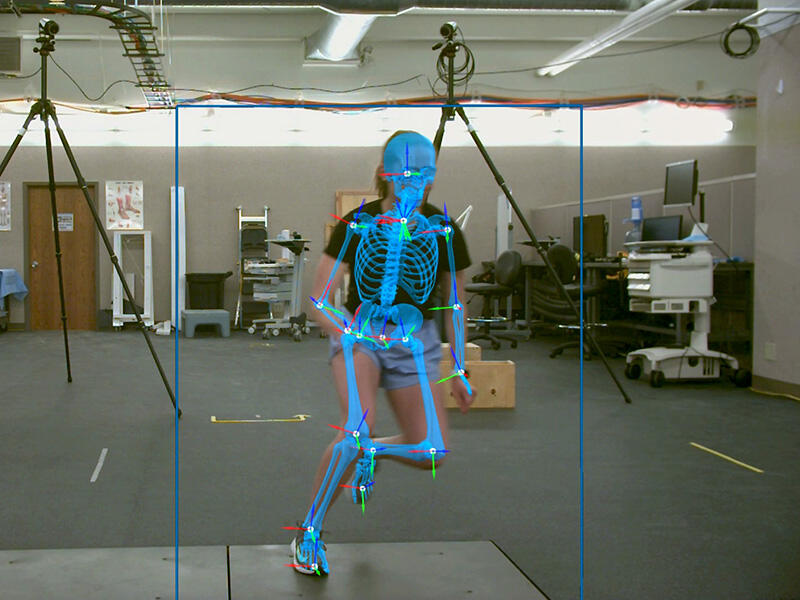Some of the most advanced research on ACL injuries takes place every day in a lab in Fargo, North Dakota. The ACL, or anterior cruciate ligament, is a thick strand of tissue which helps to connect the leg bones and stabilize the knee.
Benjamin Noonan, M.D., and Colin Bond, Ph.D., collect and study data from athletes and ACL patients across the Dakotas and Minnesota to try to better understand the causes of these injuries as well as their treatment and recovery. The project is called the Sanford ACL Initiative.
“The overarching mission is to improve the quality of life of our patients as it relates to ACL injuries,” said Dr. Noonan. “It’s an area where we can do better from a surgical standpoint, from a patient care standpoint, sports psychology, return to play, testing, research, surgical techniques – there’s room for improvement on all of that.”
Data-driven research
Dr. Noonan set out to collect as much ACL data as possible, which is where Bond comes in. He runs the lab, which is filled with specialized cameras and sensors to collect 3D motion capture video of their subjects. In the lab, athletes run, jump and cut while Bond measures their movements.
“The goal of the lab is to quantify human motion,” said Bond, a biomechanical engineering manager with Sanford Research. “There are a few risky positions related to ACL injury.”
These include:
- Knee abduction, or when the knees fall in toward each other
- Landing with straight legs
- Pelvic drop, or landing with the opposite side of your pelvis dropping toward the ground
“We know a lot of these ways that you move might elevate your risk for an ACL injury, but it’s really hard to quantify them all simultaneously until we’ve had this 3D motion capture equipment,” said Bond.
For uninjured athletes, the collected data can provide a baseline, while also giving individual athletes a visualization of their form. For those who are recovering from an injury, it can help measure their progress, while also providing information that could prevent possible reinjury.
“Unfortunately, 20%, maybe even 30% of young high-risk athletes are going to reinjure their ACL. So using this equipment, we can really measure with high fidelity who might be at more of a risk to reinjure themselves compared to others,” said Bond.
Quantifying ACL injury risk
That’s been one of the key findings so far in the research.
“One thing we’ve learned is we kind of swung too far in getting people back too soon, and we recognize that was contributing to re-ruptures,” said Dr. Noonan. “That’s one of the biggest bummers right now is when I’m sitting with this young athlete, I’m telling them, ‘Look, we need to do a surgery to give you the best chance of having a long-term good outcome of this knee, but part of the surgical intervention is you need to wait at least nine months.’”
The ACL Initiative isn’t able to detect who is most at risk for injury just yet. There are too many factors to take into account, including the type of sport a given athlete plays.
By collecting this data though, the team hopes to determine proper recovery timelines for injured athletes, while also building a data set that can teach them more about ACL injuries well into the future.
“Everything that we learn along the way can be applied to any level of a patient or athlete,” said Dr. Noonan. “These young middle school, high school, cutting, pivoting, twisting athletes, those are the ones that have a substantial reinjury rate. Fortunately, when you get into your 30s and 40s, if you have a good surgery and do a good recovery, your risk of re-rupture is quite low, but we can still learn a lot to make your outcomes better.”
Learn more
- Understanding and treating ACL injuries
- Gymnast learns lessons working back from serious knee injury
- Athlete bounces back from torn ACL with help from Sanford
…
Posted In Fargo, Orthopedics, Research, Sports Medicine

